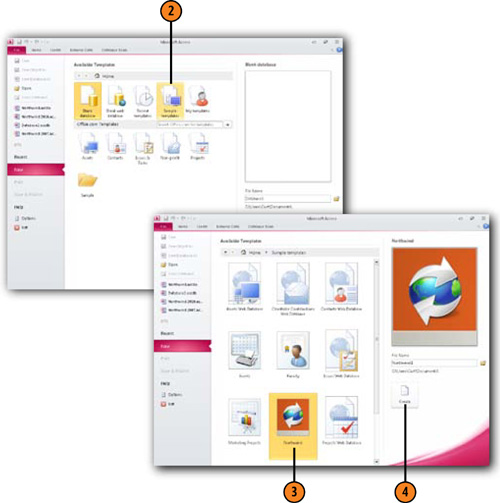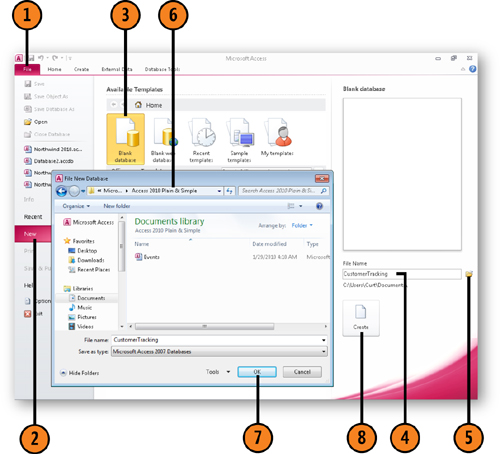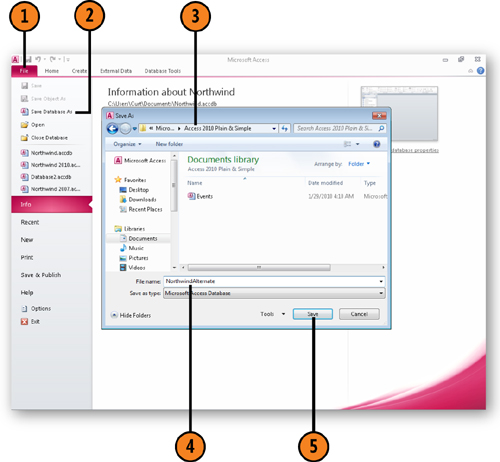1. Viewing a Sample Database
One
of the best ways to get a feel for using Access is to work with an
existing database. The Northwind database, which you install along with
Access, is a complete database with tables, queries, reports, and forms
you can examine to see what goes into a solid database design.
1.1. Open a Sample Database
Click Create.

Note:
The Northwind database
contains a form that appears when you open the database. The form
enables you to log in using different user accounts. If a database you
create doesn’t include accounts for individual users, that form won’t
appear.
2. Creating a New Database
If
you want to create a new database from scratch, you can do so by
creating a blank database and then adding your own tables and other
objects. You can also create a new database based on an existing
database, saving yourself lots of time and effort.
2.1. Begin a New Database
Type a name for your database.
Navigate to the folder where you want to store the database.
Click Create.

2.2. Create a New Database Based on Another Database
Open the database you want to use as a model and then click the File tab.
Navigate to the directory where you want to save the new database.
Type a different name for the new database.
Click Save.

Note:
If you don’t type a new name for your database, you will just save the existing database, not create a new file.